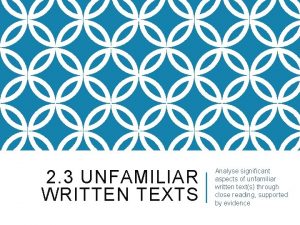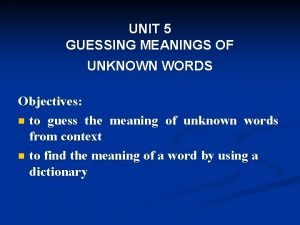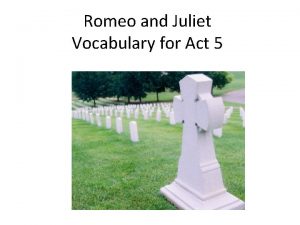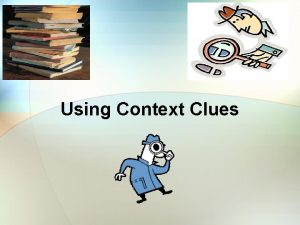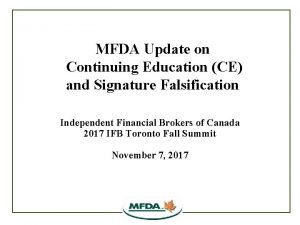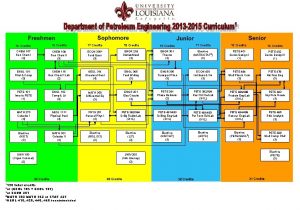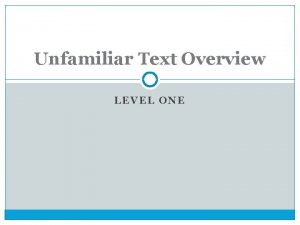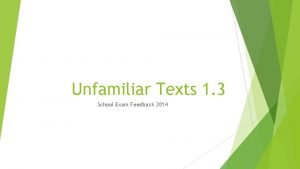Unfamiliar Texts AS 91100 external 4 credits Questions











- Slides: 11

Unfamiliar Texts AS 91100, external, 4 credits.

Questions • 3 texts and 3 questions 1. NON-FICTION 2. POETRY 3. FICTION

What do you need to do? • You must have a good understanding of language techniques and effects. • You must be able to identify and explain the purpose of the text. • You must be able to identify and explain theme/main idea/message of the text.

PATMI • PURPOSE • AUDIENCE • TONE • MAIN IDEA • Do this for every text

SQUAT • SKIM read the text • QUESTIONS read them and highlight key words • UNDERSTAND take time to read and understand the text • ANNOTATE look for techniques and make notes • TIME to answer: address the question in your answer and answer all parts of the question.

Weebly resources • rgaclasses. weebly. com UNFAMILIAR TEXTS tab • There is 1. a link to quizlet with techniques and definitions. 2. A table with techniques and their effects. 3. A guide to using ‘magic sentences. ’

Non fiction techniques • Simile, metaphor, onomatopoeia, opinions, alliteration, rhetorical questions, imperatives, emotive language, irony, exaggeration, contrast, colloquial language, anecdote, facts and statistics, inference, humour, lists, quotations, pun, sentence structure, structure of the piece, mood, tone, anecdotes, allusions, parallel or triple construction, historical references, point of view…

Poetry techniques • Alliteration, assonance, anastrophe, allusion, connotation, consonance, denotation, hyperbole, internal rhyme, imagery, metaphor, meter, mood, tone, onomatopoeia, pun, oxymoron, personification, rhyme scheme, rhythm, simile, stanza, synecdoche, understatement, verse.

Fiction Techniques • symbolism, allegory, metaphor, simile, imagery, irony, personification, foreshadowing, hyperbole, contrast, juxtaposition, point of view, mood, tone, parallel and triple construction, structure of the text, sentence structure, onomatopoeia…

Anthem for doomed youth What passing-bells for these who die as cattle? Only the monstrous anger of the guns. Only the stuttering rifles' rapid rattle Can patter out their hasty orisons. No mockeries now for them; no prayers nor bells; Nor any voice of mourning save the choirs, – The shrill, demented choirs of wailing shells; And bugles calling for them from sad shires. 8 What candles may be held to speed them all? Not in the hands of boys but in their eyes Shall shine the holy glimmers of goodbyes. The pallor of girls' brows shall be their pall; Their flowers the tenderness of patient minds, And each slow dusk a drawing-down of blinds.

Question time Analyse how the poet portrays the death of young men on the battle field in World War I. In your answer you should: • identify and give examples of techniques used in the text, and explain their effects (techniques might include metaphors, alliteration, word choice, and structure) • show understanding of the narrator’s situation and perspective • show understanding of the poet’s overall purpose.
